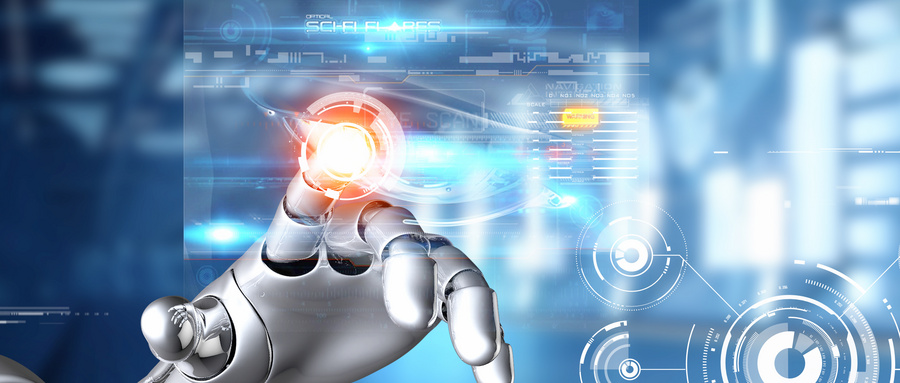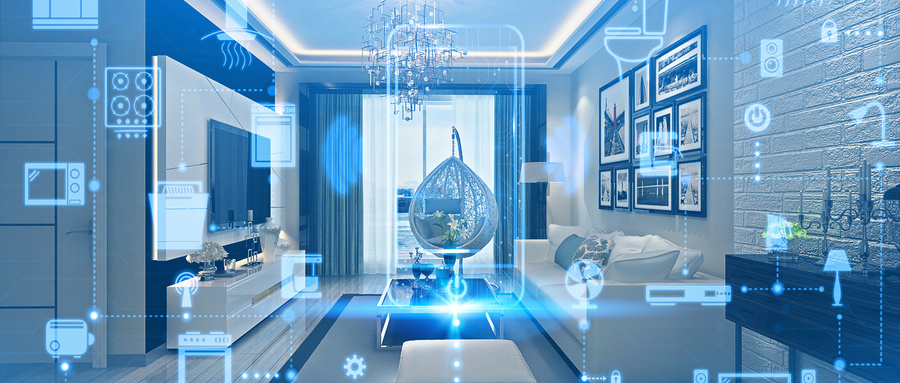Personalization and automation remain the main directions for improving the quality of user experience. They also help make the lives of millions of people safer, more convenient, and more comfortable. Artificial intelligence (AI) and the Internet of Things (IoT) have become the main tools in recent years. It is with their help that a symbiotic relationship of functional automation and carefully adjusted personalization has been created. We will analyze how technology affects the development of smart homes in the article. When technology is introduced into the 'smart home' system, all necessary information from the Internet of Things will enter the artificial intelligence foundation, which has already executed prepared action algorithms.

Artificial intelligence converts the received data into commands, which then form a behavioral model that fully meets human needs. This is because technology can analyze the results obtained after contact with people and predict further options for event development. Assistant integration is ubiquitous, and even giants like Apple, Google, and Amazon use them to achieve automation. With their help, users can issue commands to their devices from afar and ensure that nothing goes wrong. Perform similar operations from the application. It should be convenient and usable, and not contain grammar errors. If you want to develop one of these solutions, you must handle the problem as cleverly as possible. Every detail is essential, from the interface to spelling errors. By the way, tools such as Fresh Essay and Grammarly will help avoid this situation.
Digital Assistant
Today, there are automated security systems and devices based on AI and IoT that can provide voice control from afar. For example, millions of people use Alexa, Siri, and Google Assistant in their daily lives. Through technological advancements, researchers are expanding speech recognition capabilities, thereby increasing the functionality and value of the technology. Nowadays, users can control their devices hands-free or use Bluetooth speakers to change the programs on their TV. But so far, the system needs improvement because from a security perspective, the results are not satisfactory. The fraudster has learned how to crack voice control devices.
The advantages of artificial intelligence and the Internet of Things
The main advantages of AI and IoT in smart home systems:
Users can turn off/open all devices in the house connected to AI, even in another country in the world;
All data of intelligent technology work will enter the application program on the smartphone, ensuring complete control over them;
If necessary, all smart devices will automatically shut down after the user leaves home.
In addition, if a person comes home from work, they can turn on the heating system, kettle, or other equipment to return to their already warm home, for example, immediately make tea for themselves.
Example of automation equipment
Virtual assistants can search for information on the internet, call specific subscribers, and even synchronize with other devices through voice control. Technology can be presented in the form of applications installed on smartphones or embedded into devices using this software.
Let's take a look at several devices that can be used in the 'smart home' system, equipped with AI and IoT technology, their capabilities and functions.
washing machine
The use of technology in washing machines allows them to adjust the amount of used laundry detergent or other detergents, set operating modes, and turn on the device at specific times. In addition, the adjustment process can be programmed based on the clothing load and fabric type in the drum.
When the detergent is used up, the system will automatically notify you and send appropriate notifications. Therefore, you can save on washing and electricity, while the machine itself will increase/decrease operating power as needed.
Machine learning technology allows you to study a person's daily life in detail, analyze it, and make adjustments. For example, if a person goes to the gym every three days and marks it on the calendar, the machine will automatically turn on the desired washing mode after the user puts dirty clothes in. The device will automatically determine the weight of the clothing and select the optimal amount of water for it, which will also save money.

Intelligent speaker
Smart speakers were one of the earliest devices to adopt AI and IoT technology. Many models are equipped with voice recognition software. They can also be controlled using mobile applications. Voice commands can create playlists and shopping lists, trigger notifications and reminders, and search the web.
Adopting Jerry's ultra low power Bluetooth intelligent chip, with rich intelligent compatible design, providing differentiation, excellent audio quality, and multimodal digital microphone system integration, developers can create more compatible products, achieving audio playback, high dynamic range speech recognition, wireless connectivity, extremely low power consumption, and easy production.
Chip model: AC6951C
CPU: 32-bit DSP
Support protocol: 5.1+BR+EDR+BLE
Packaging: LQFP48 (7mm * 7mm)
refrigerator
The use of artificial intelligence refrigeration equipment can automatically diagnose the system, which will prevent premature component failure and save money. In addition, the equipment itself will adjust the power and power consumption based on the load on the shelves.
Deep learning allows you to control the quantity of products and identify them. Therefore, even if the user is working, the application will display the remaining amount of food, which will allow for timely replenishment of inventory. Then, based on the analysis, AI will recommend specific formulas and focus on various products.
Users can remotely obtain snapshots of refrigerator shelves, create product lists, and control the temperature in the refrigerator and freezer.
When a person selects a recipe from the list, the refrigerator can emit an additional synchronous oven signal, which will start the heating process at the correct time.
Cleaning robot
Thousands of people around the world suffer from dust allergies, and millions of people complain about the constant appearance of dust in their homes, which disrupts their comfortable lives. However, unfortunately, few people clean it after a hard day's work, and even for floor coverings, many people cannot afford cleaning services. Robot cleaners can help you solve dust and dirt problems, even in difficult to reach areas.
The main unresolved issue of this technology is the lack of precise synchronization with the household ecosystem, which reduces its effectiveness. But researchers continue to solve it, so in the near future, universal cleaning robots should be able to cope with any obstacles in the form of furniture and equipment.
lock system
With the help of intelligent door locks, users can control whether the door is closed and send signals about the results to their families. It also includes the function of receiving notifications when others open the door, which improves the security level.
Watching the baby
Even if the mother is cooking lunch in the kitchen and the child stays in the nursery, she can always use the monitoring system - the baby monitor - to control him. Due to sound and video recording, users can track any baby's movements on the screen at any time. In addition, most models support Wi Fi, 3G, and 4G to ensure smooth signal transmission.
conclusion
Artificial intelligence (AI) and the Internet of Things (IoT) can make smart home systems more useful to humans and minimize their contact with devices. If early technology were luxury goods, then today more people can afford it.
They not only help make the daily lives of those who understand technology more convenient; Any user can intuitively figure out how to set up the device and automate its workflow.
Everyone can appreciate the improvement of security levels, the reduction of energy costs, complete automation, and equipment autonomy. Artificial intelligence and the Internet of Things are improving, and over time, their capabilities in 'smart home' systems will become unlimited.